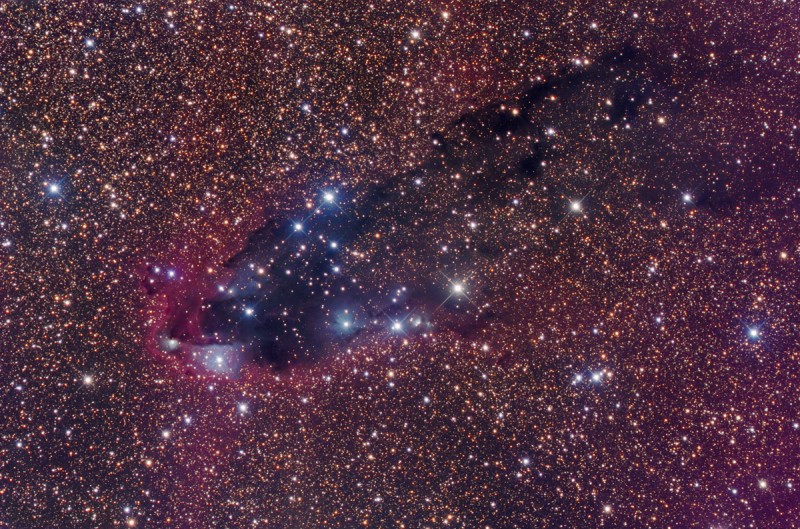Credit & Copyright: Robert Gendler
Explanation:
In silhouette against a crowded star field
toward the constellation
Scorpius,
this dusty cosmic cloud evokes for some the image of an ominous
dark tower.
In fact, clumps of dust and molecular gas
collapsing
to form stars may well lurk within the dark nebula,
a structure that spans almost 40 light-years across the
gorgeous
telescopic view.
Known as a
cometary globule, the swept-back cloud,
extending from the upper right to the head (top of the tower) left and
below center, is shaped by intense ultraviolet radiation from
the OB association of very hot stars
in NGC
6231, off the left edge of the scene.
That energetic ultraviolet light also powers the globule's bordering
reddish glow of hydrogen gas.
Hot stars embedded in the dust
can be seen as small bluish
reflection nebulae.
This dark tower,
NGC 6231, and
associated nebulae are about 5,000 light-years away.
digg_url = 'http://apod.nasa.gov/apod/ap080508.html'; digg_skin = 'compact';
1999 2000 2001 2002 2003 2004 2005 2006 2007 2008 2009 2010 2011 2012 2013 2014 2015 2016 2017 2018 2019 2020 2021 2022 2023 2024 2025 |
Yanvar' Fevral' Mart Aprel' Mai Iyun' Iyul' Avgust Sentyabr' Oktyabr' Noyabr' Dekabr' |
NASA Web Site Statements, Warnings, and Disclaimers
NASA Official: Jay Norris. Specific rights apply.
A service of: LHEA at NASA / GSFC
& Michigan Tech. U.
|
Publikacii s klyuchevymi slovami:
Scorpius - dark nebula - star formation - Skorpion - temnaya tumannost' - zvezdoobrazovanie
Publikacii so slovami: Scorpius - dark nebula - star formation - Skorpion - temnaya tumannost' - zvezdoobrazovanie | |
Sm. takzhe:
Vse publikacii na tu zhe temu >> | |
